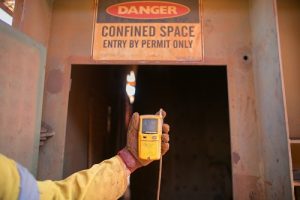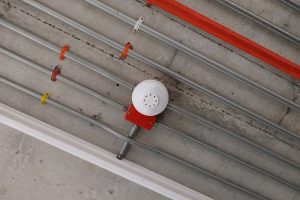Portable gas detection tools are essential for any industry dealing with substances that produce dangerous vapors. The safety of a whole fleet of workers relies on how well the device they’re carrying identifies poisonous or flammable vapor in the air. So, it’s crucial that companies purchase the best apparatus for the job.

There are many devices out there, but most of them identify vapors the same way. To find out which portable gas detector is best for your company, you should understand the basic mechanism of these gadgets. Read on to learn more about them.
Basic Gas Detection Mechanism
Each device uses a sensor to detect dangerous gases in the air. The most common type identifies the substance by creating a quantifiable current every time a particular chemical reaction occurs. It then alerts the user if the amount of electricity measured goes past a certain threshold, which means there’s a hazardous level of poisonous or flammable vapor.
Most devices use a pellistor sensor or catalytic bead LEL sensor. It requires at least 10% of the atmosphere to be composed of oxygen to function well. Without this gas, it can be easily contaminated by substances such as unburned fuel. This may need to be replaced every 3 to 4 years, as it has a limited lifespan. It’s also very fragile, so proper handling of the device is needed to make sure this component lasts for the prescribed amount of time.
In the past, different sensors were needed to properly detect all types of gases present in a certain area. But, today, the federal government requires companies to use modern devices built to identify more than one kind of vapor, making them practical to use. These tools should at least have features that can measure the following:
Carbon Monoxide
Combustible Materials (Methane, Butane, etc.)
Hydrogen Sulfide
Oxygen
Infrared Detection Method

Industrial Gas DetectorOther versions of gas detectors use an infrared sensor. This analyzes the air that enters the device by hitting it with infrared light and measuring the wavelengths that bounce back. So, it’s not prone to being contaminated by different substances. It also doesn’t depend on chemical reactions and oxygen to function.
Working Applications for Gas Detectors
Long Range Detection
Some models allow workers to analyze the air at a distance. They can check for dangerous substances outside their area of movement and evaluate them remotely on the main body of the portable gas leak detector. If a poisonous or combustible chemical is present, employees can identify it without coming into contact with it.
Sometimes, gas distribution isn’t even, and substances are scattered throughout the space. With a detector in hand, workers can push the probe or tube ahead of them and check each section before they move further in.
Inspection of Enclosed Spaces
These devices are crucial to employee safety when opening confined spaces. If there’s a leak somewhere inside, the gas can accumulate. Without the proper apparatus, your employees won’t know the air quality until they open the seal. This can be dangerous because poisonous vapor may leak out of the area and be inhaled by the workers.
With a portable detector, they don’t have to fully open the door or hatch. They can just insert the probe into a small gap or hole and get the data from outside.
When choosing which gadget you should buy for your company, consider the working conditions. Contact DOD Technologies, Inc to find out which portable multi-gas detector is best for your particular case.







